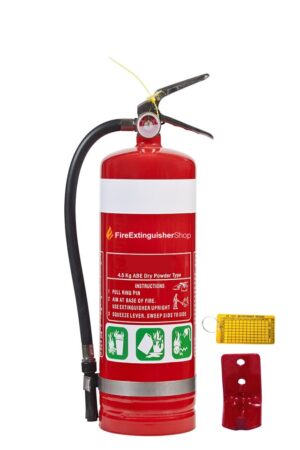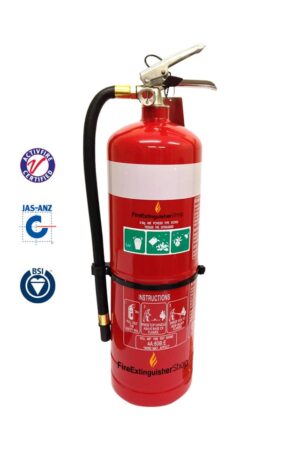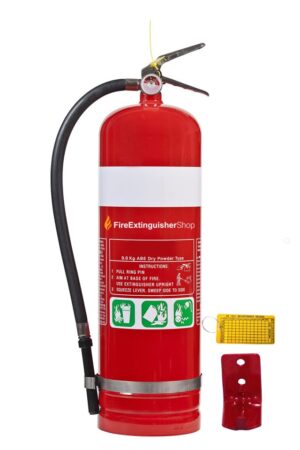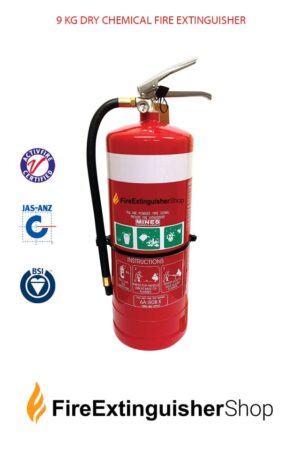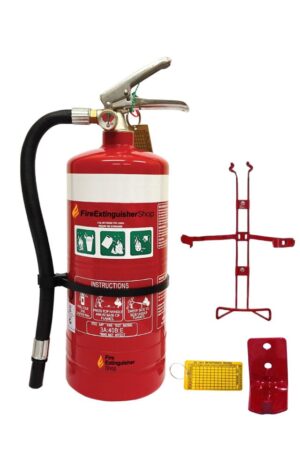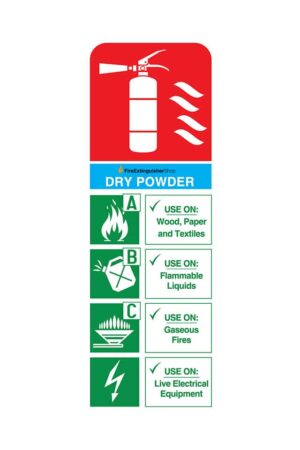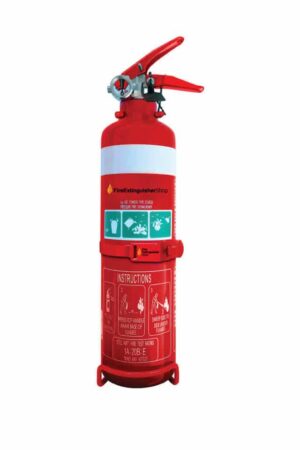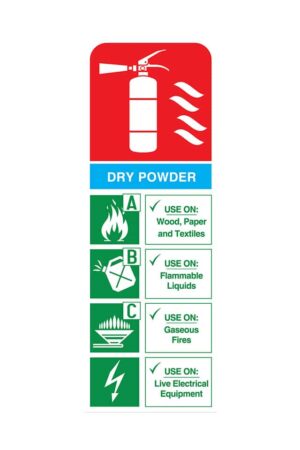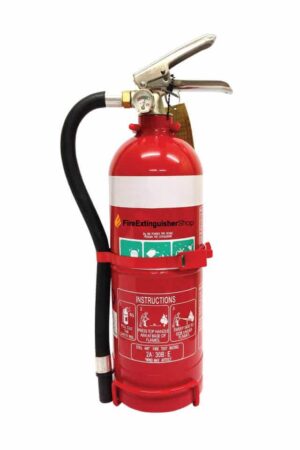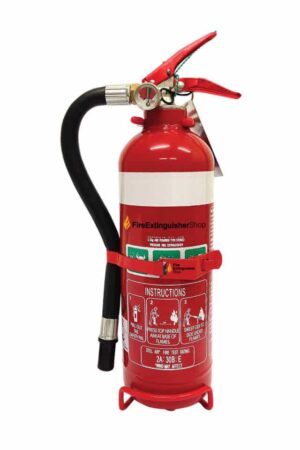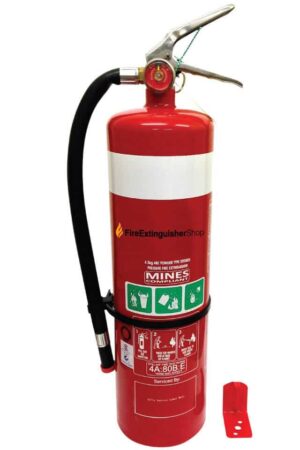Dry Chemical Fire Extinguisher – What Exactly Is It?
There are several types of fire extinguishers. Each one works by attempting to remove an element needed for a fire to grow and flourish.
Also known as an ABE, BE, or DCP extinguisher, a dry chemical fire extinguisher contains powder proven to remove oxygen from the equation by blanketing the fire and smothering the flames. Its fine powder also interrupts the chemical reaction required to produce fire, making it an extremely effective tool for putting out fires of many types and sizes.
You can buy fire extinguishers of every variety throughout Australia, but dry chemical fire extinguishers are the most commonly used for a reason. Their ability to put out different kinds of fires, from oil and gas to paper and electric, has made them the most popular choice for Australian home and business owners.
How Do You Identify a Dry Chemical Fire Extinguisher?
In Australia, dry chemical fire extinguishers typically have a red body with a white colour band going around the tank near the top. Dry powder fire extinguishers can also be identified by their description labels. Each tank is imprinted with a label containing the type of extinguisher it is (“ABE Dry Chemical”), the size of the extinguisher, and use instructions.
If installed, the fire extinguisher label and identification sticker must be visible at all times. Please make sure to also display the maintenance service tag. Non-compliance can be a serious issue, especially when installed and used in a commercial building.
What Types of Fires are Dry Chemical Extinguishers For?
When putting out a fire, it’s important to use the right extinguisher for the situation. Dry powder fire extinguishers are ideal for extinguishing fires caused by electrical equipment, oil, paper, textiles, and flammable liquids. It’s the perfect extinguisher to have nearby to put out a variety of fires both safely and efficiently.
When selecting a dry chemical fire extinguisher, there are two primary types to choose from:
- ABE – For A, B, and E fire classes. Fights wood, paper, cardboard, petrol, diesel, flammable liquid, and office equipment fires.
- BE – For B, E, and F fire classes. Fights petrol, diesel, flammable liquid, cooking oil, electrical, and office equipment fires.
How Do Dry Chemical Fire Extinguishers Work?
Dry chemical extinguishers act like a blanket, smoldering fires by separating oxygen from their fuel. Most ABE fire extinguishers contain monoammonium phosphate, which is able to flow easily, melt, and cover flames as it moves across a fire. BE powder, on the other hand, doesn’t melt, making it ineffective in extinguishing class A fires.
Both BE and ABE extinguishers can be used to combat flammable gas fires. However, before doing so, carefully evaluate the situation.
How to Use a Dry Chemical Extinguisher
Dry powder extinguishers come in different sizes. A medium sized extinguisher can empty its contents in just 10-15 seconds. Needless to say, it helps to know how to use it the right way.
The best way to combat a fire using a dry chemical fire extinguisher, or any fire extinguisher for that matter, is to use the P.A.S.S. system:
P = Pull
A = Aim
S = Squeeze
S = Sweep
Why Use a Dry Chemical Fire Extinguisher?
As you’ve already learned, there are several reasons for using a dry chemical fire extinguisher, such as:
• Effective in fighting class A, B, and E fires
• Suitable for travelling fires
• No thermal shock
• Wide temperature range
• Acts as a heat shield
• Range of sizes and prices
Why Not Use a Dry Chemical Fire Extinguisher?
When shopping for a fire extinguisher for sale, there are some things to think about before buying a dry chemical extinguisher, such as:
• May cause respiratory problems
• Residue cleanup
• Poor post-fire safety
• Needs regular maintenance and servicing
• Prone to packing down
Dry Chemical Fire Extinguisher Maintenance
Fire extinguisher price is only one thing to consider when looking to protect your home or business. In addition to this as well as the type and size of the extinguisher, you must also consider the required maintenance.
Per regulations, most fire extinguishers are checked by a service professional every six months. However, we recommend you perform a checkup once a month for the following reasons:
• To ensure the extinguisher can be easily accessed and isn’t blocked by any objects
• To maintain the pressure at the appropriate level and keep it from going too high or too low
• To keep the nozzle unobstructed and make sure the pin is intact
• To check the tamper seal and look for dents, rust, leaks, and any other signs of wear
• To check when hydrostatic testing is required to ensure the cylinder can be safely used
Dry Chemical Fire Extinguishers at a Fair Price
The Fire Extinguisher Shop is a leading supplier of fire protection equipment and products to businesses throughout Australia and organizations in the fire protection industry. At FES, we are proud of the fire protection equipment we sell. Our dry chemical extinguishers and other equipment are all Australian Standards Approved and Certified, so you can rest assured you are receiving excellent quality equipment at a fair price.

